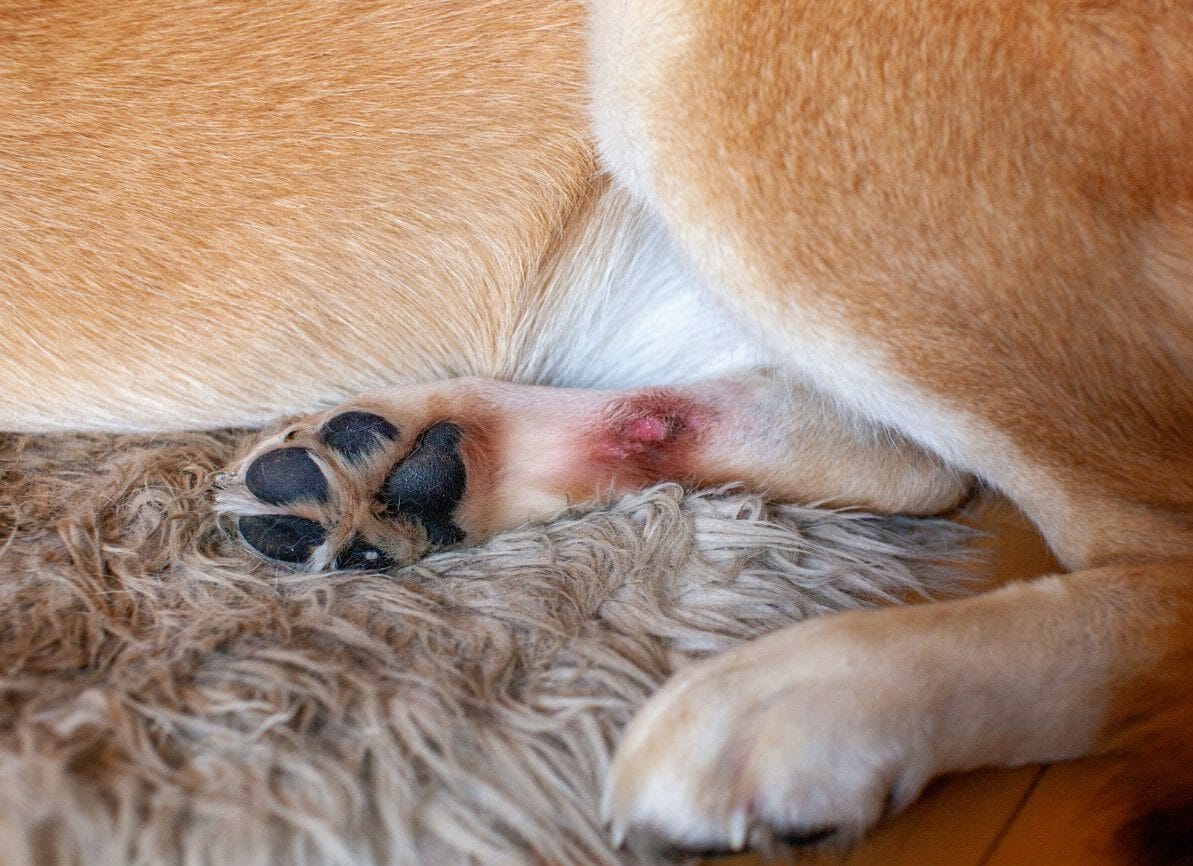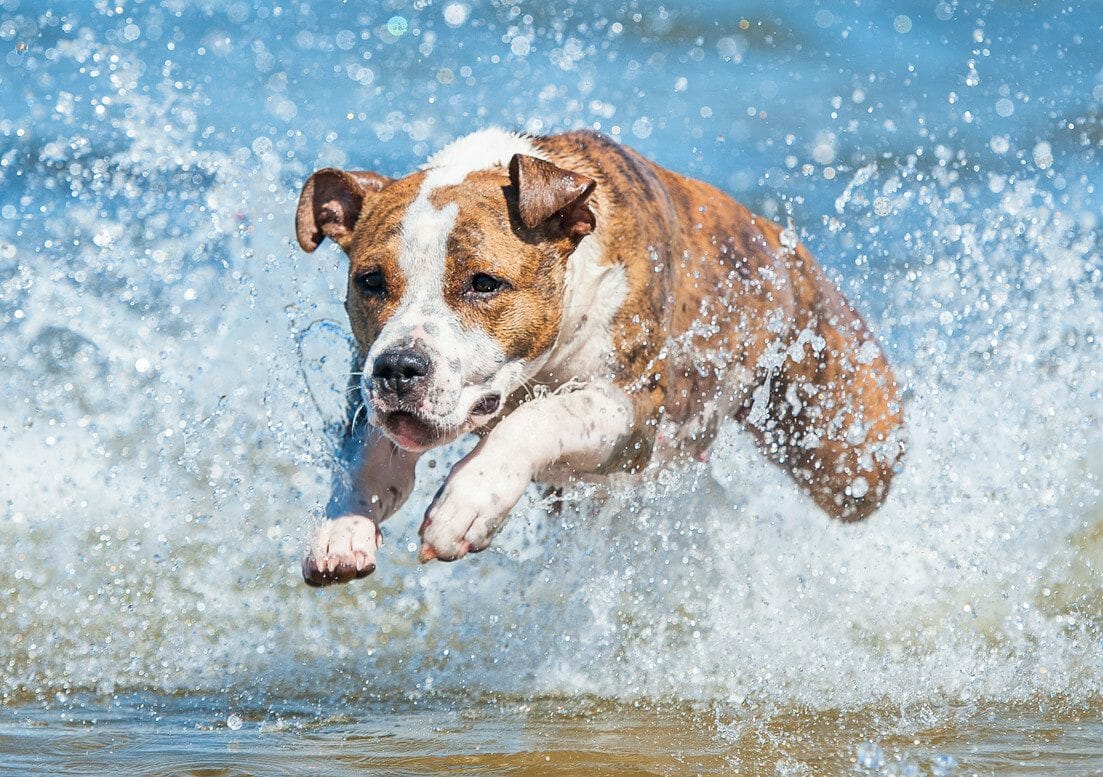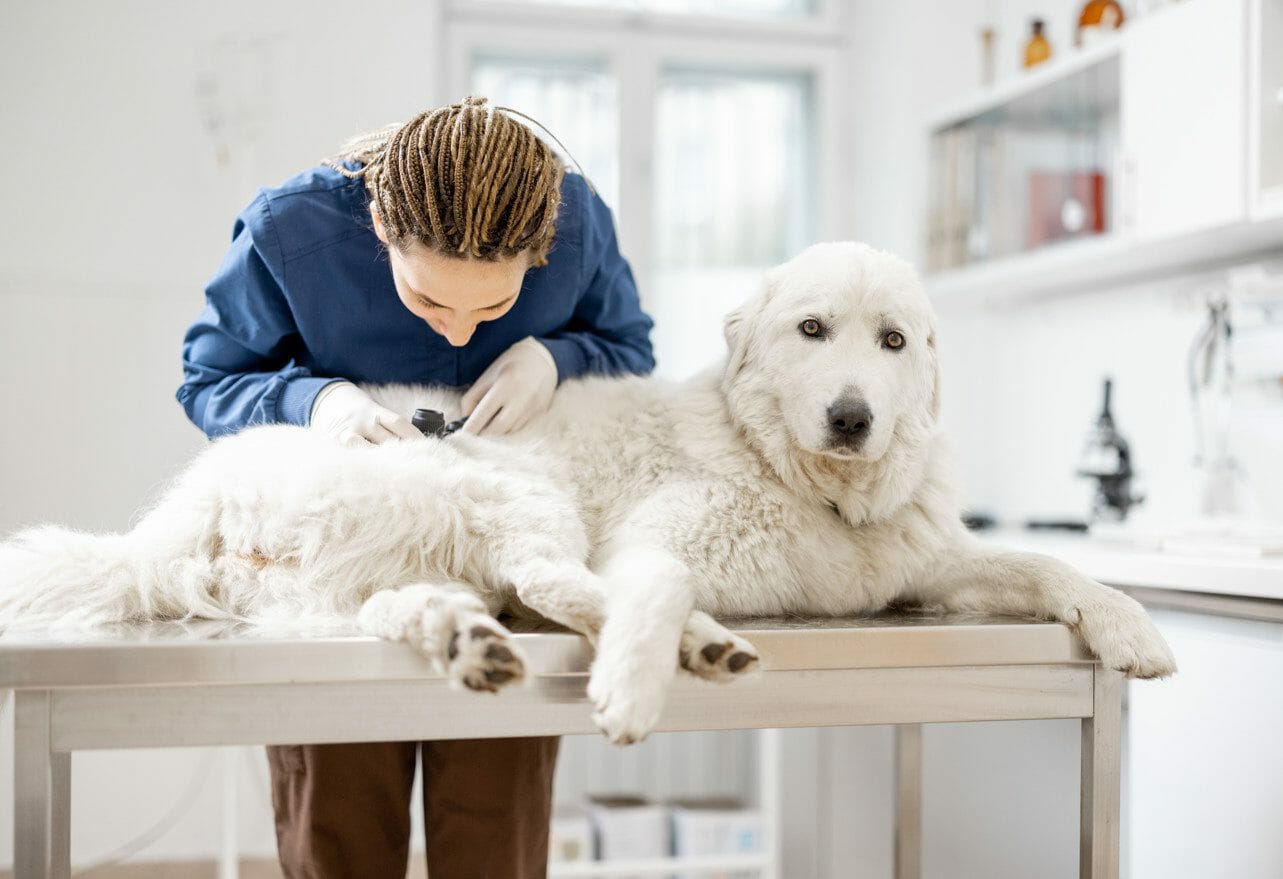What Does a Hot Spot on a Dog Look Like?
Many hot spots on dogs begin with what most pet owners believe to be the formation of a harmless insect bite. However, hot spots on dog—although restricted to specific areas of the body—can be much more serious than an insect bite.
Acute moist dermatitis (otherwise known as hot spots) are areas of tender, raw, inflamed skin, which are often home to bacterial infections. They are usually pinkish or reddish in appearance. If left untreated, these areas can become extremely painful and bloody abscesses.
Some pictures of hot spots on dogs are enough to spur any pet owner to treat their dog as soon as a hot spot begins to develop. For dogs prone to infections or allergies, hot spots are recurring afflictions that can arise in a matter of hours.
If an allergic reaction occurs or something is bothersome to the dog’s skin, the dog will begin to bite, itch, and tear at its skin, which subsequently forms the reddened abscess. Hot spots can also take on a dry, scab-like appearance or be wet and oozing.
This can cause a vicious cycle. The infection or allergies that primarily caused the irritation can be further perpetuated when the dog’s itching and licking causes more infections and lesions in the skin. It is imperative that pet owners be aware that any potentially irritating or scratchy spot on the skin can develop into hot spots on dogs.

What Causes Hot Spots on Dogs?
The moist dermatitis that dogs commonly and unknowingly inflict on themselves can have their origin in a wide variety of potential causes. However, it is important to note that these skin issues are much more common in the warmer months of the year (like summer and early fall) due to a dog’s exposure to moisture and outdoor allergens. Matted, dirty fur and moist skin can also trigger infections leading to canine hot spots.
To put is simply, hot spots are a dog’s reaction to its skin feeling irritated. By this definition, one can easily imagine how easy it is for a hot spot to begin to form. Here are some of the more frequently observed causes for acute moist dermatitis:
- Allergic reactions to specific foods or something in the environment
- Bites from insects
- Anxiety, stress, or boredom that triggers continual licking of an area
- Damp, matted, dirty fur
- Preexisting infections, also known as pyodermas
- Joint or arthritic pain
- Stinging cuts in the skin
When any one of these conditions are present in a dog—especially conditions that recur—hot spots can become an issue. Luckily, hot spots are easily noticeable conditions due to their unmissable appearances and the fact a dog will continually mess with it. Once a hot spot is found, the area should be immediately treated at home or at the vet’s office to receive dog hot spot treatment.

Where are Hot Spots on Dogs?
A hot spot can develop almost anywhere on a canine’s body where they can reach and claw or bite at it. Despite this fact, a hot spot on dog tail, paw, belly, or face are some of the usual regions where a hot spot is likely to develop. The legs and hip areas are also prone to these skin issues.
Veterinarians recommend that dogs, especially those prone to acute moist dermatitis, be searched frequently and carefully for them. If a dog has been playing in the rain or swimming in a pool or lake, moisture can accumulate under the fur, which can trigger a reaction in the dog. If your dog has been around water or spent any amount of time running around outside, they should be checked for hot spots. This is even more true for dogs who are prone to allergies.
Hair loss that is confined in these areas is an obvious sign of acute moist dermatitis. Pet owners should be wary that if these areas are left untreated for even a day and are not given dog hot spot treatment, they can grow and spread very quickly.
Dog Hot Spot Treatment
 When treating hot spots, several options should be considered. If this is one of the first times your pup is experiencing a hot spot, a hot spot home remedy could be tried. If these infections are part of a chronic cycle for your dog, a trip to the vet would be more beneficial because the vet could pinpoint what is causing them to occur so frequently.
When treating hot spots, several options should be considered. If this is one of the first times your pup is experiencing a hot spot, a hot spot home remedy could be tried. If these infections are part of a chronic cycle for your dog, a trip to the vet would be more beneficial because the vet could pinpoint what is causing them to occur so frequently.
In any case, as long as immediate actions are taken to treat the hot spot—at home or at a vet’s office—it is up to the pet owner’s discretion to choose a method of dog hot spot treatment.
Some medicines to consider include:
- A topical wound-healing spray such as Vetericyn
- Hydrocortisone creams or sprays
- Benadryl (but be sure to get the correct dosage)
Methods of Treatment for Hot Spots in Dogs
Whether you want to try to treat the hot spots yourself or you want your vet to examine them and make recommendations, some general guidelines should be followed. Some general steps to get hot spot relief for dogs are as follows:
- The area around the hot spot should be shaved or clipped. This will keep the area clean and clear of potential hair matting.
- The area should be thoroughly cleaned and sanitized with an antiseptic solution such as chlorhexidine solution (2% to 4%). This solution should be thoroughly rinsed after cleaning the area and should not be used on the face.
- Over-the-counter or prescribed hot spot cream for dogs or anti-inflammatory medication should be given topically or orally. This medication will not only soothe the area, but it can act as a defense against further infection.
- Consistently applying an ointment or hot spot spray for dogs to the cleaned area is highly recommended.
- It is also advised that pet owners purchase a protective collar (also known as a cone or Elizabethan collar) to keep the dog from licking and biting at the hot spot, which will worsen the situation.

If you are using home remedies to treat the hot spot and it is not improving, an examination by a vet is required. This is because vets can prescribe prescription medication and can determine what exactly is causing the hot spot. For example, if the the acute moist dermatitis is caused by arthritis, pain medication (such as gabapentin) may be prescribed. If ear infections are the cause, the underlying yeast or bacteria will be addressed.
If a vet is not consulted for hot spots that will not disappear with home treatment, further infection could arise, making it even more painful and potentially dangerous for the health of your dog. Under the careful examination and treatment of the vet, dogs with these skin problems usually show rapid improvement in a matter of days.



